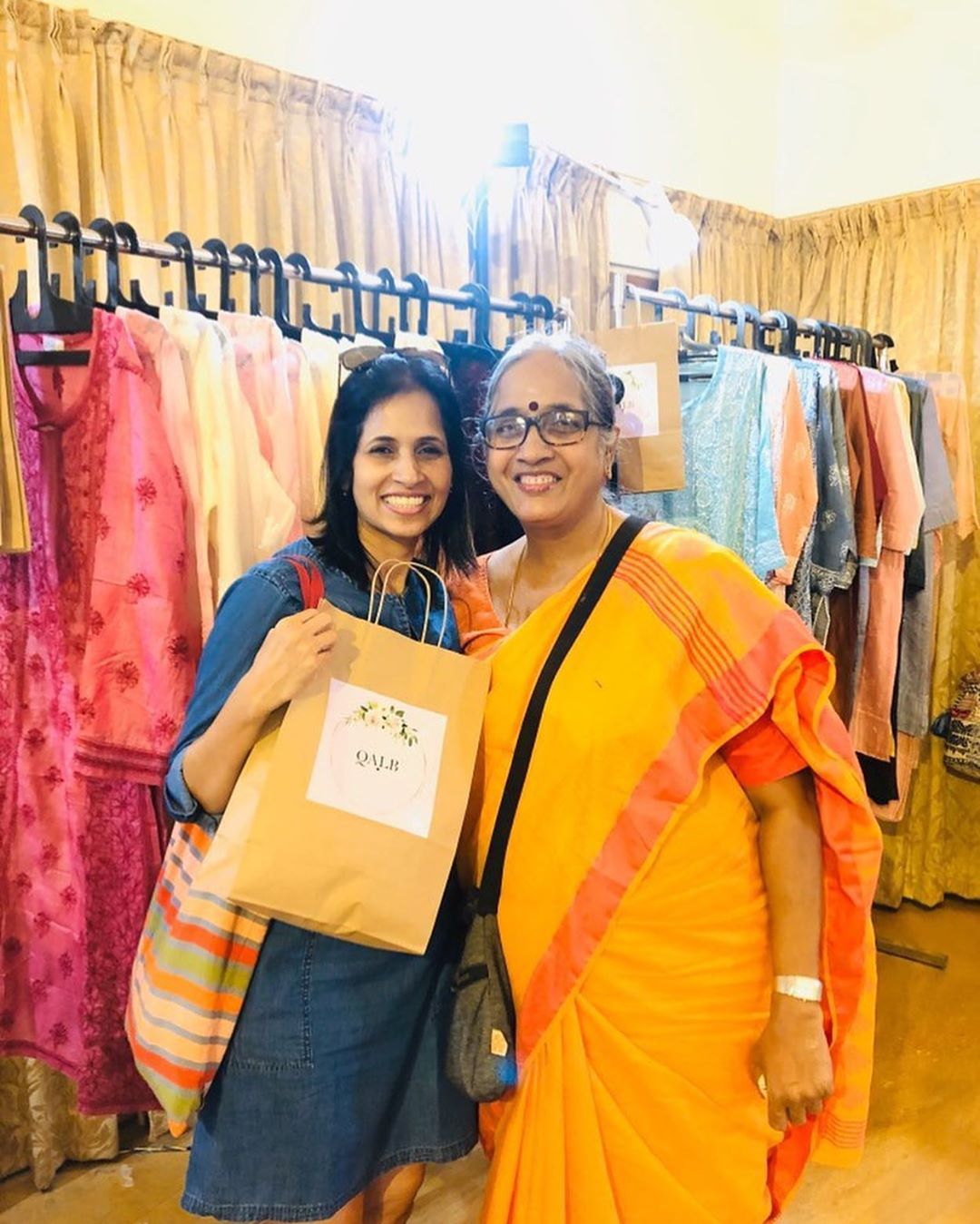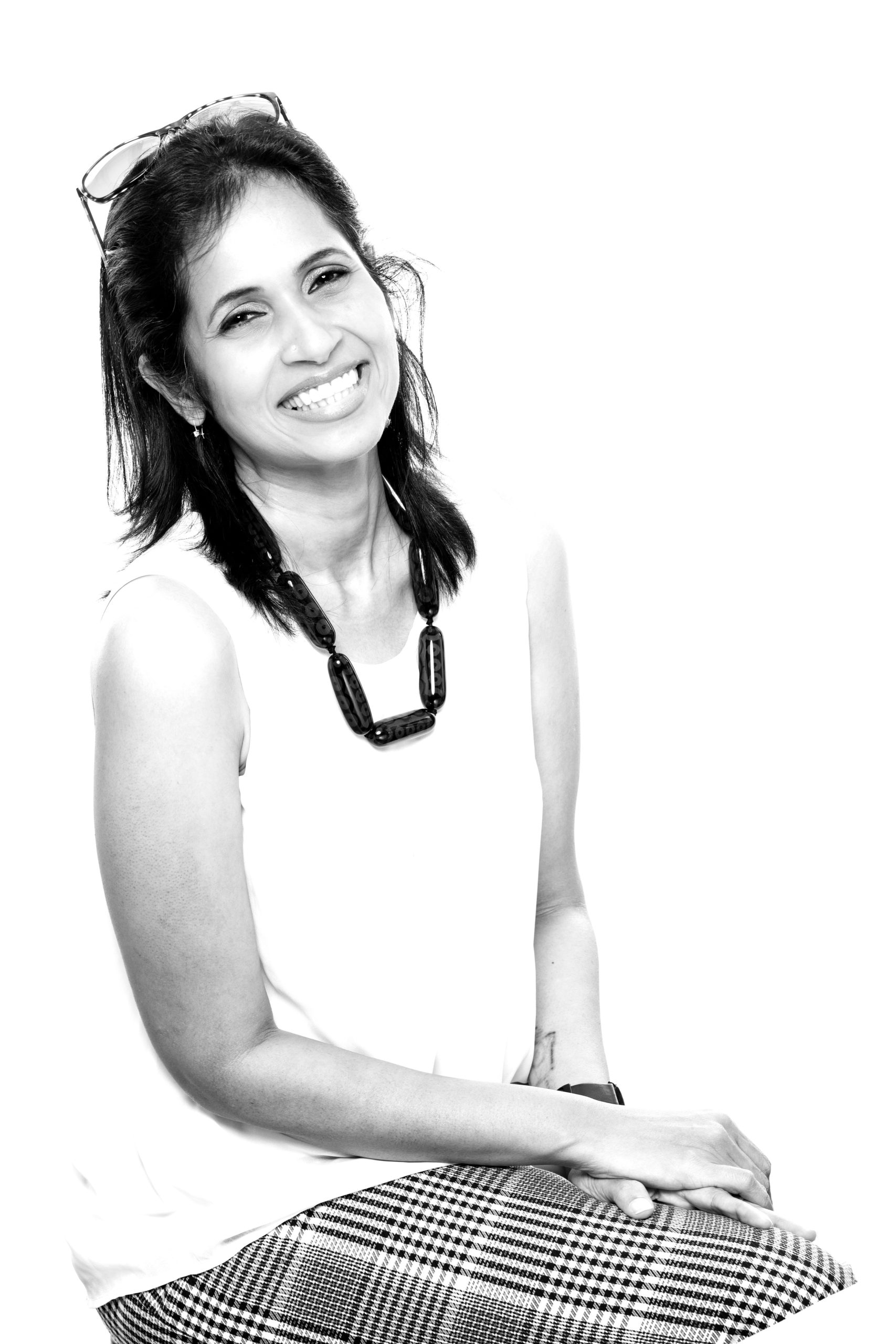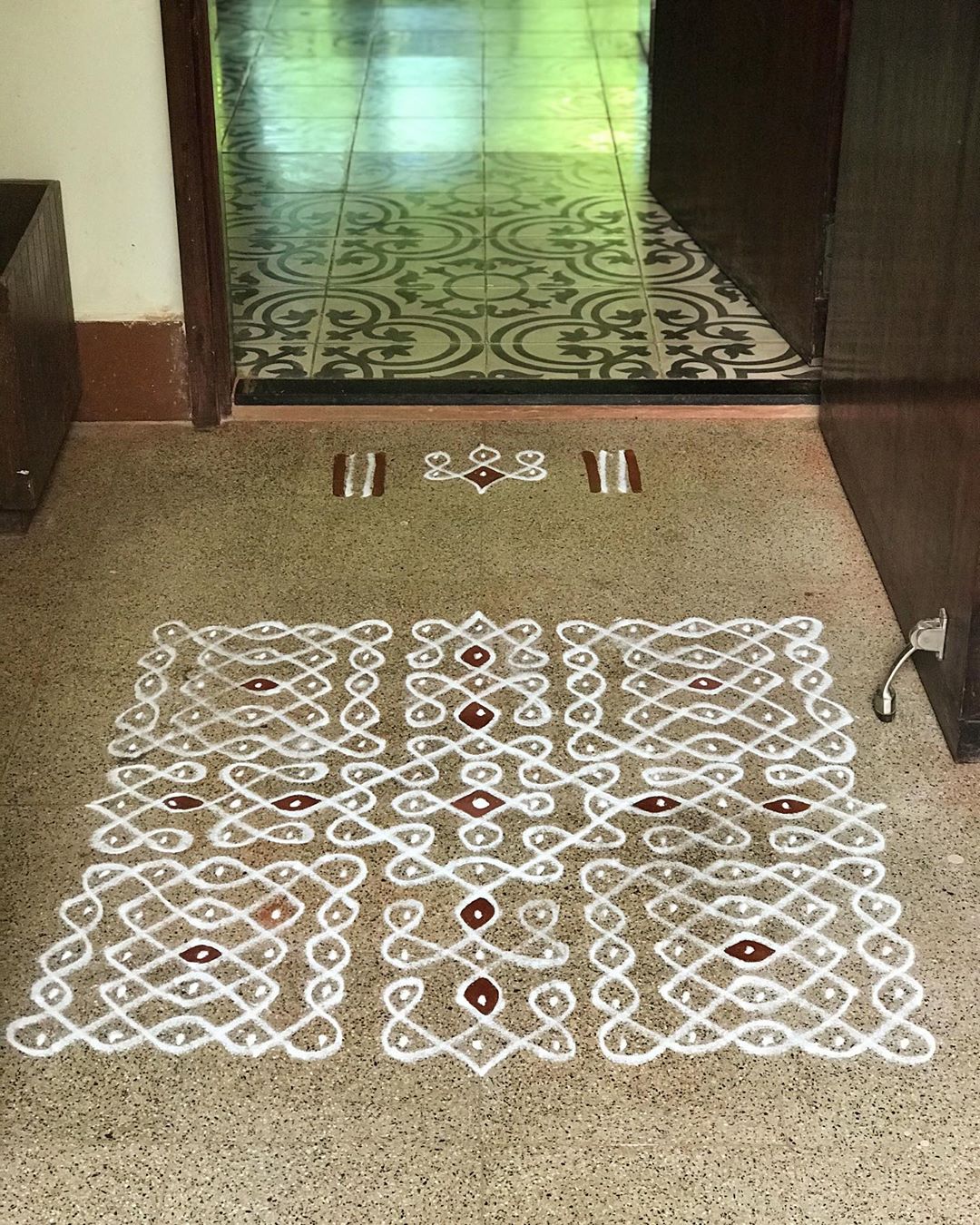How Kolams Changed This 40-YO Chennai Designer’s Life After a Massive Burnout
“Making kolams on an almost every day basis gives me a purpose and a reason to go on,” says Bhargavii, who dons various hats. An interior designer by qualification, Bhargavii has varied interests in multiple art forms ranging from photography to animation.

The kolam—a design made from rice flour on the floor—is a staple feature in any traditional South Indian home. There are many types of kolams with different layers of complexity, for different occasions, and locations. Some are drawn outside the home, some in the pooja room, but what is common among all of them is their beauty and symmetry.
What is unique about this story is not the kolam, but how it gave 40-year-old Bhargavii Mani, a new lease of life.
“Making kolams on an almost every day basis gives me a purpose and a reason to go on,” says Bhargavii, who dons various hats. An interior designer by qualification, she has varied interests in multiple art forms ranging from photography to animation.
Speaking to The Better India about her latest production, which she has aptly named Kolam Podu (draw kolam in Tamil), Bhargavii explains how she has seen a positive transformation not just in her own life but also in her relationships with people around.
Are you wondering how a kolam can lead to better interpersonal relationships? Do read on.
Growing up in Madras (now Chennai)

“Like many traditional households in Chennai, my parents also expected that I would make a kolam each morning. My father would go for a walk at about 5.45 AM, and I was expected to have made the kolam before he left home. There was a discipline to the lives we led,” she begins.
While at that time, it was nothing more than a chore that Bhargavii, twenty years; hence, things have changed.
“At that time, I did not even think of exploring it further and seeing what else I could do with it. There were a few designs, which I made on a rotational basis. The idea was to get it done with before my father returned. I also stopped making them at the first chance I got,” she says with a chuckle.
Fast forward to 2011

While Bhargavii spent a few years of her life in Singapore, she returned to Chennai in 2011 and started Edge Design House—her own design company.
“As a design house we are into communication design, photography, and other allied design services,” she says.
After almost eight years in the industry, Bhargavii speaks about how in 2018, she experienced a burnout.
“No matter what one may call it, from a mid-life crisis to a second curve, the truth is that I felt finished. I needed to find a different way to approach life,” she says.
While perhaps Bhargavii wasn’t sure of what she wanted, she knew the life she was leading didn’t excite her enough, and she wanted to change things around.
What changed?

It was around December 2018 that a chat Bhargavii was having with her mother, led to a ‘Eureka moment’ of sorts.
“My mother suggested that I try and bring in some discipline into my life—her saying that somehow took me back to my younger days and the kolam making every morning. ‘Why not bring that discipline back and see if it makes a difference?’ was the foundation on which I restarted making kolams,” she tells me.
It was when she started making these kolams that she realised that there was no proper organised repository of the traditional designs.
She says, “While the market has many books on kolams—they aren’t necessarily organised, and from a user perspective, difficult to follow. None of them compelled me to begin making kolams.”
Second beginnings

“Initially when I started, trust me when I say, I could not even draw a straight line to save my life,” she says and laughs.
Interestingly, all it took was a week for Bhargavii to see a difference in her hand-eye coordination. She noticed her concentration and focus levels were improving.
I ask her if she attributes all this to making kolams.
“Yes. A large part of the change I saw in myself came from that dedicated time I would spend making the kolams, and besides that, I was also meditating and chanting. So, on the whole, it was the culmination of it all. The best part is that the change was so noticeable that my team at work started commenting on how I was calmer and being able to control my anger far better,” she adds.
Kolam bringing neighbours together

From the watchman to the help working in the building, everyone was curious about the kolams that Bhargavii was making.
Narrating a few instances, she says, “The elderly person who delivers milk to our house for the longest time would not even strike up a conversation—he would deliver the milk and leave. Interestingly, he started chatting with my mother about my kolams and on occasions when he has particularly liked a design would ensure that he gave us a little extra milk, as a token of his appreciation.”
On days when Bhargavii decided to skip her routine of making the kolam, friendly neighbours would knock on her door to check if she was doing well. Yet another heartwarming story she shares is about how people in her apartment started taking the stairs to their floor only so that they can look at her work of art.
“It was through these instances that I realised that the kolam is not just something that you draw outside your house—and that is honestly where I began my search to understand it more,” she explains.
Kolam Podu

While the journey for Bhargavii began as one to introspect about what she wanted from life, she eventually decided to use social media, Instagram, in this case, to share her kolams with others.
Kolam Podu started as an avenue for Bhargavii to showcase the kolams and on 29 November 2018; she posted her first picture, which garnered just about 49 views.
In less than 1.5 years, the page has more than 8500 followers and a very robust fan base who continuously engage with Bhargavii on the various kinds of kolams that can be made.
When asked where she sees this heading, she says, “It’s just the beginning—the more I find out about kolams, the more enthusiastic I feel about sharing the knowledge with everyone.”
If you would like to follow Kolam Podu and perhaps try making some of these gorgeous pieces of art yourself, do subscribe to the page here.
Also Read: Chennai Couple Collects Discarded Bottles, Upcycles Them Into Gorgeous Art
(Edited by Gayatri Mishra)
Like this story? Or have something to share?
Write to us: [email protected]
Connect with us on Facebook and Twitter.

Similar Story

Threats, Bribes No Match For Hero Who Rescues Lions, Chimpanzees From Horrifying Cruelty
From lions and tigers to chimpanzees and elephants, Chennai-based Antony Rubin has led many important animal rescue missions across Tamil Nadu. He shares why he began this work, and how he keeps going.
Read more >
If you found our stories insightful, informative, or even just enjoyable, we invite you to consider making a voluntary payment to support the work we do at The Better India. Your contribution helps us continue producing quality content that educates, inspires, and drives positive change.
Choose one of the payment options below for your contribution-
By paying for the stories you value, you directly contribute to sustaining our efforts focused on making a difference in the world. Together, let's ensure that impactful stories continue to be told and shared, enriching lives and communities alike.
Thank you for your support. Here are some frequently asked questions you might find helpful to know why you are contributing?


This story made me
-
97
-
121
-
89
-
167












